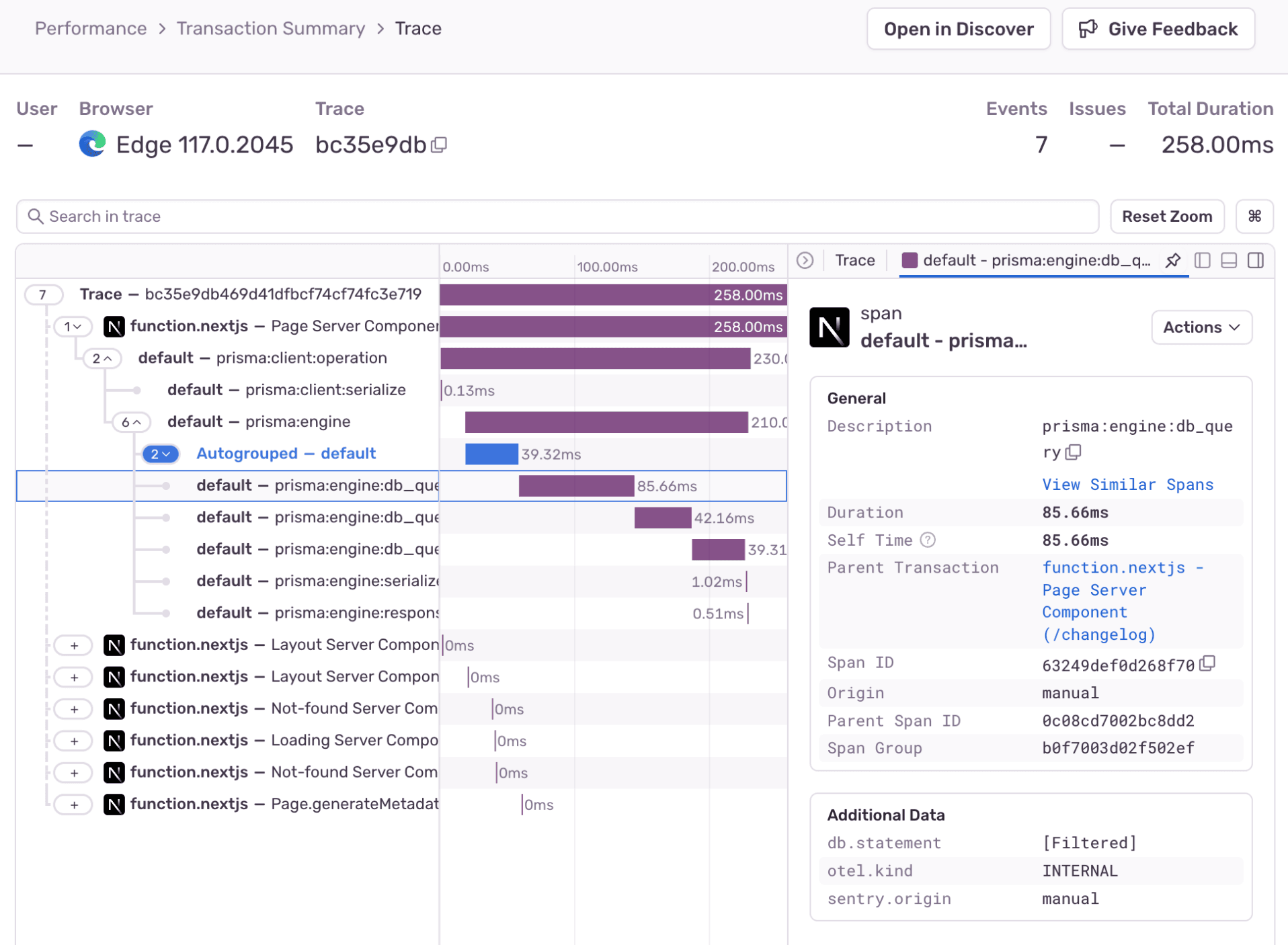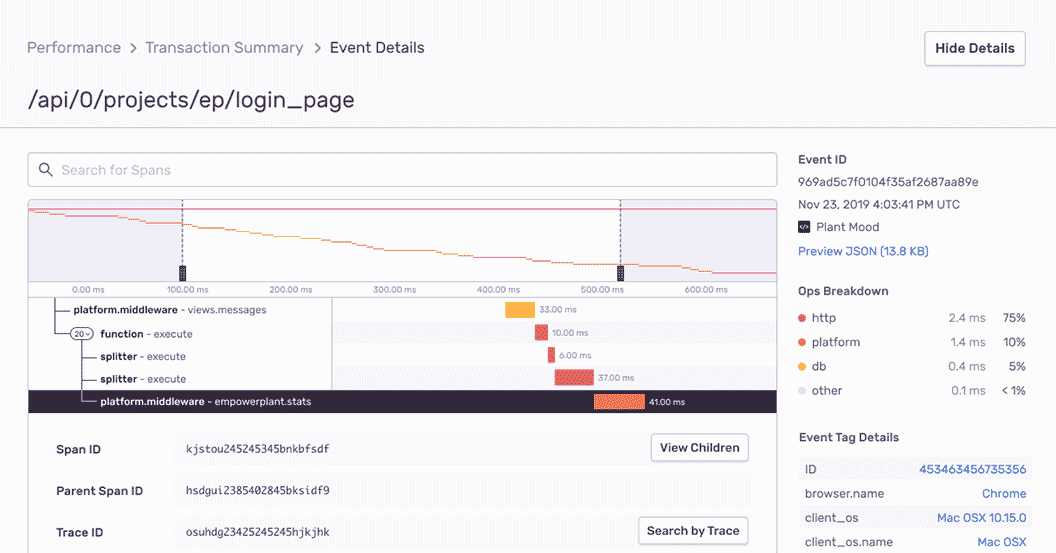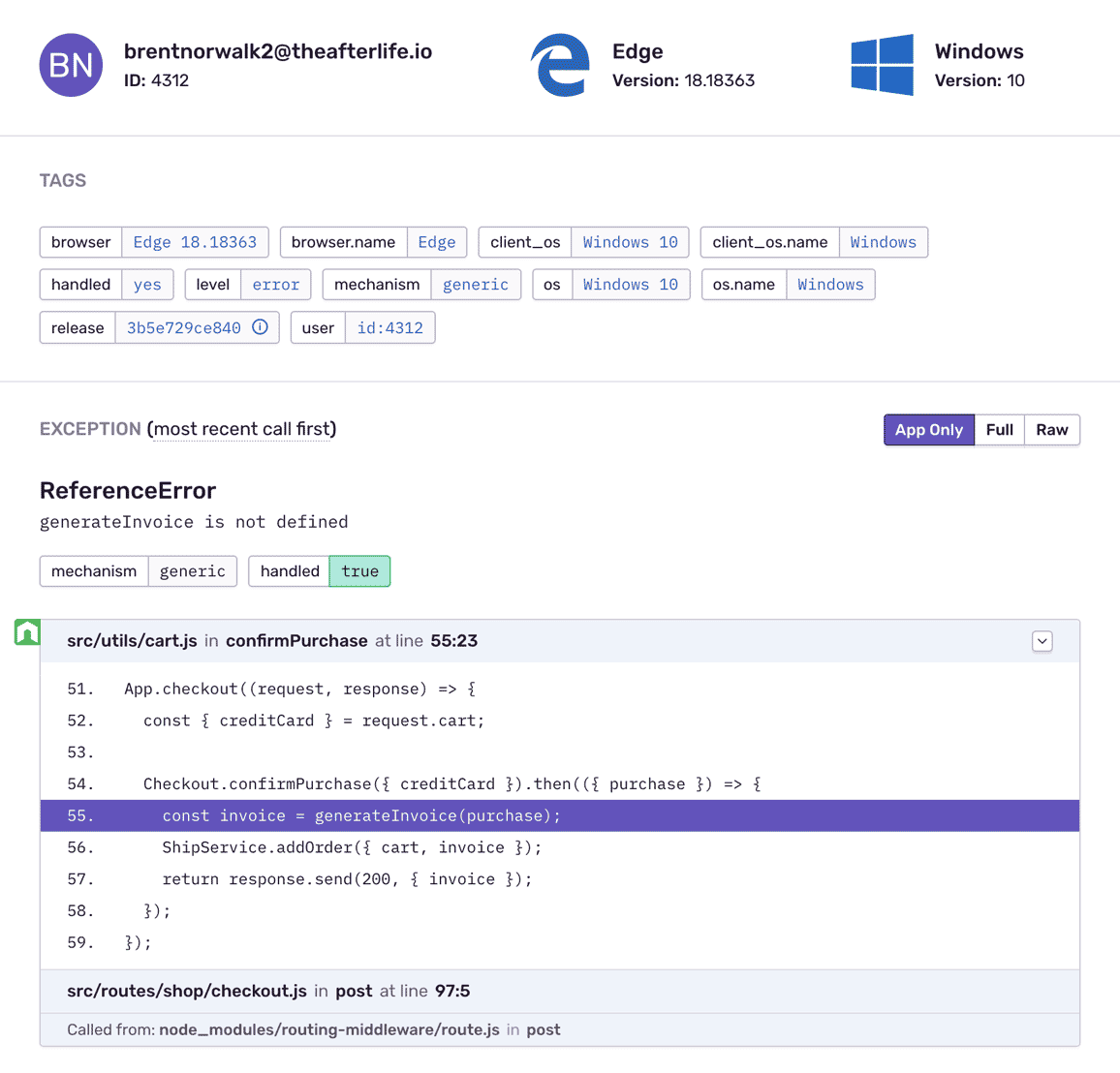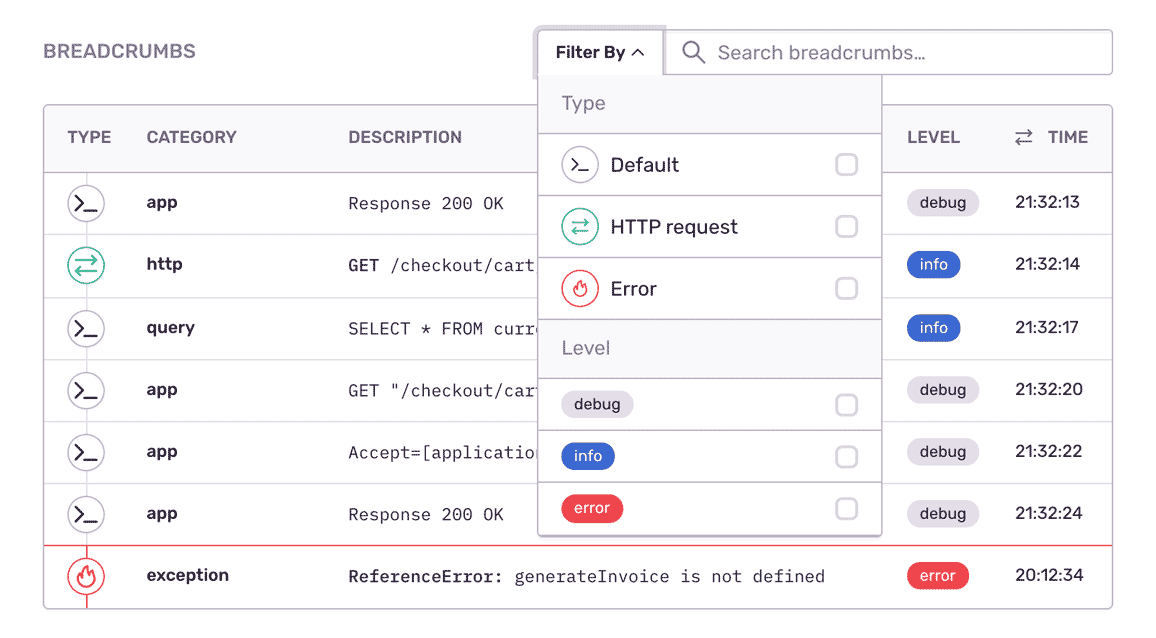
Node Error and Performance Monitoring
Actionable insights to resolve Node performance bottlenecks and errors. Improve your Node monitoring workflow with a full view of releases so you can mark errors as resolved and prioritize live issues.
Getting Started is Simple
Grab the Sentry Node SDK:
npm install @sentry/node
Configure your SDK:
const Sentry = require('@sentry/node'); Sentry.init({ dsn: 'https://<key>@sentry.io/<project>' });
Check our documentation for the latest instructions.
See all platformsHow to install the Node SDK

Powered by OpenTelemetry
Sentry works with OpenTelemetry to provide a simple configuration process, and rich distributed tracing context across all the libraries and frameworks used in your application. Regardless of your chosen tech stack.

Node Performance Monitoring
Quickly identify Node performance issues and view full end-to-end distributed trace to see the exact, poor-performing API call and surface any related errors.

Node Error Monitoring with Complete Stack Traces
See the Node source code at each frame instead of settings for just line and column numbers. Get proper asynchronous context tracking — like thread-local store — in a way that fits Node’s concurrency model.

Fill In The Blanks About Node Errors
See what the app was doing when the Node error occurred: HTTP requests, database queries, console loft statements, etc.
Node Application Profiling
Profiling lets you see what parts of your code are consuming the most resources, like CPU or memory, in your application— so you can optimize them before end user experience is impacted. Test your application performance in any environment, including in production, without writing manual tests or extensive troubleshooting.
Try Profiling“Sentry’s high-quality tooling helps Disney+ maintain high-quality service to its tens of millions of global subscribers.”
Debugging Any Node Exception
Aggregate errors by factors like request details, user ID, and event level to see what’s new, a priority, or a trend.
Assign custom key-value tags to reproduce the error environment specific to your application, business, and users.
Find answers to key questions: Has an error with the same stack occurred before? In which app release did the Node bug occur?
It’s why companies that don’t have a complete view of their infrastructure are being punished:
The average cost of network downtime is around $5,600 per minute — or $300,000 per hour.
1 out of 5 online shoppers will abandon their cart because the transaction process was too slow.
On average, a two-second slowdown in page load decreases revenues by 4.3 percent.